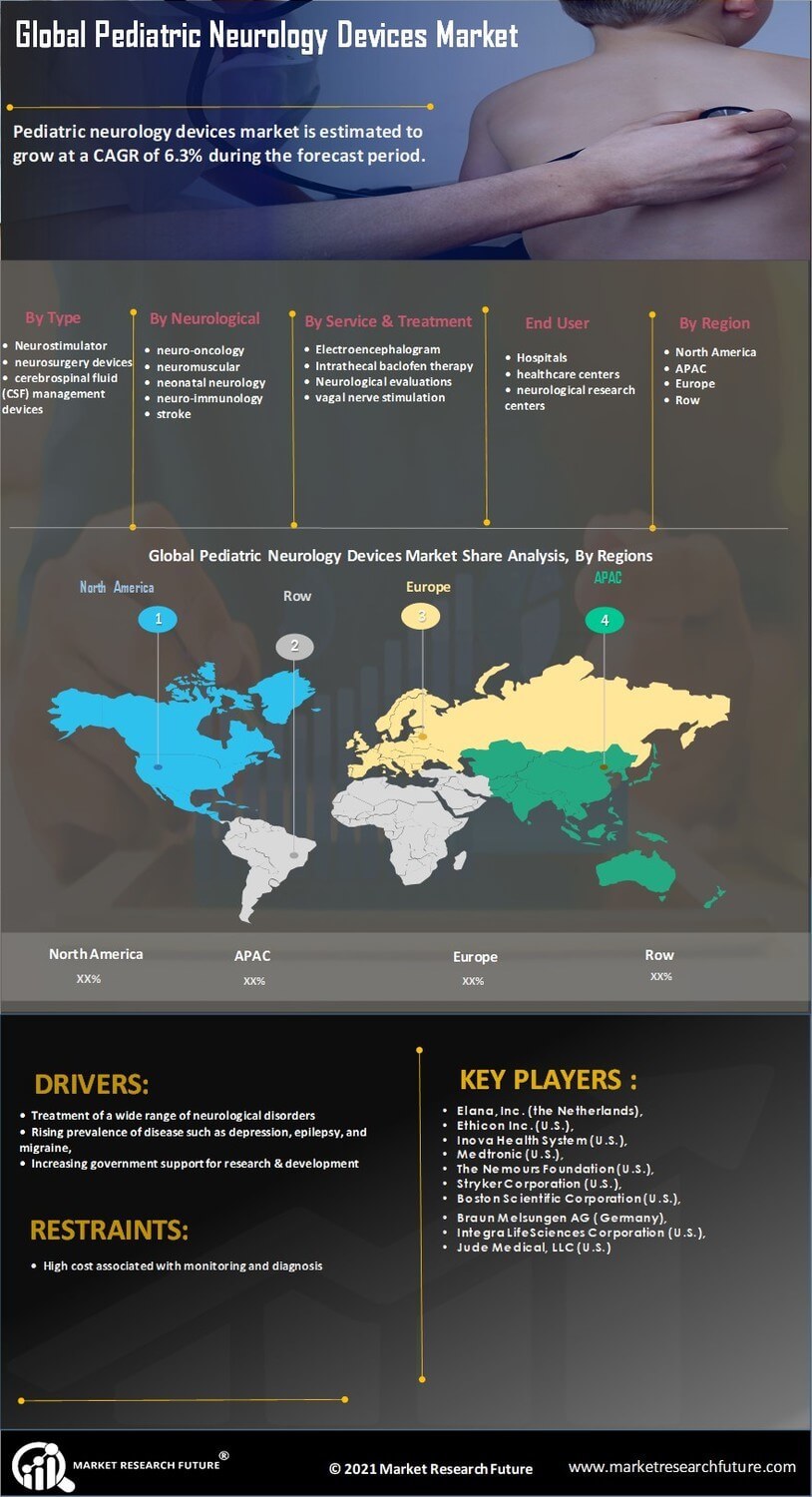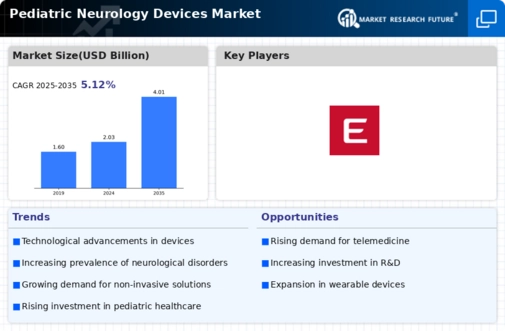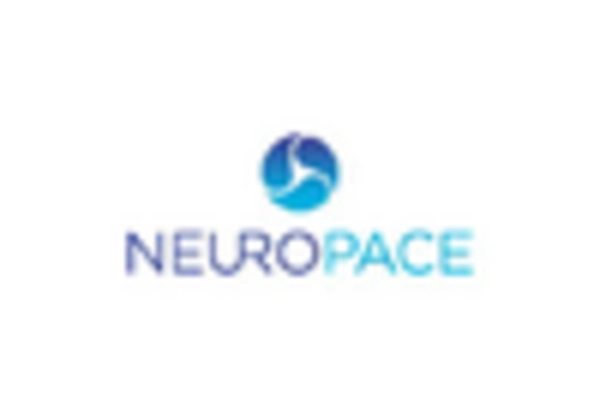Increased Awareness and Diagnosis
There is a notable increase in awareness regarding pediatric neurological disorders, which is significantly impacting the Pediatric Neurology Devices Market. Parents, educators, and healthcare professionals are becoming more informed about the symptoms and implications of conditions such as epilepsy, cerebral palsy, and autism spectrum disorders. This heightened awareness is leading to earlier diagnosis and intervention, which is crucial for effective treatment. According to recent studies, early diagnosis can improve the quality of life for affected children, thereby driving demand for specialized devices. The market is witnessing a shift towards more comprehensive diagnostic tools that cater to this growing need, indicating a robust growth trajectory in the coming years.
Focus on Patient-Centric Solutions
The Pediatric Neurology Devices Market is increasingly focusing on patient-centric solutions that prioritize the unique needs of children. This shift is evident in the design and functionality of devices, which are now being developed with a child-friendly approach. Manufacturers are investing in research to create devices that are not only effective but also comfortable and engaging for young patients. This trend is likely to enhance adherence to treatment protocols, as children are more likely to cooperate with devices that are designed with their preferences in mind. The market is expected to expand as healthcare providers recognize the importance of patient-centricity in improving treatment outcomes.
Government Initiatives and Funding
Government initiatives and funding aimed at improving pediatric healthcare are playing a pivotal role in the Pediatric Neurology Devices Market. Various governments are recognizing the importance of addressing pediatric neurological disorders and are allocating resources to support research and development in this field. Initiatives that promote awareness, early diagnosis, and access to advanced treatment options are likely to stimulate market growth. Additionally, funding for innovative device development is expected to increase, fostering collaboration between public and private sectors. This supportive environment is anticipated to drive advancements in pediatric neurology devices, ultimately benefiting children with neurological conditions.
Rising Incidence of Neurological Disorders
The rising incidence of neurological disorders among children is a critical driver for the Pediatric Neurology Devices Market. Recent statistics indicate that conditions such as attention deficit hyperactivity disorder (ADHD) and epilepsy are becoming increasingly prevalent. This trend necessitates the development and availability of specialized devices for diagnosis and management. As healthcare systems strive to address this growing burden, there is a corresponding increase in investment in pediatric neurology devices. The market is projected to respond positively to this demand, with an expected growth rate of around 7% annually, reflecting the urgent need for effective solutions in pediatric neurology.
Technological Advancements in Pediatric Neurology Devices
The Pediatric Neurology Devices Market is experiencing a surge in technological advancements that enhance diagnostic and therapeutic capabilities. Innovations such as advanced imaging techniques, neurostimulation devices, and wearable monitoring systems are becoming increasingly prevalent. For instance, the integration of artificial intelligence in diagnostic tools is streamlining the identification of neurological disorders in children. This technological evolution not only improves accuracy but also reduces the time taken for diagnosis. Furthermore, the market is projected to grow at a compound annual growth rate of approximately 8% over the next five years, driven by these advancements. As a result, healthcare providers are more equipped to offer tailored treatments, thereby improving patient outcomes and satisfaction.

















Leave a Comment